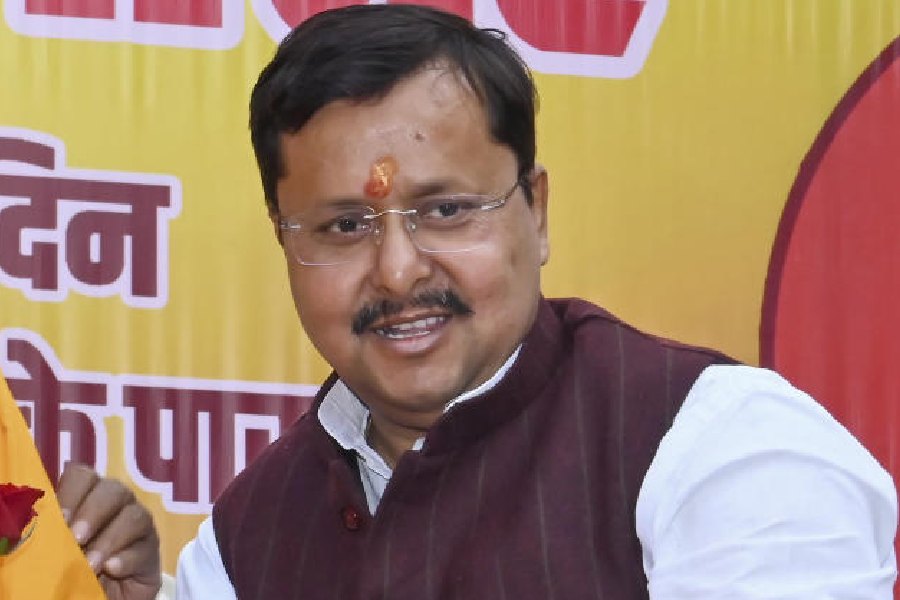 |
| Ram Sasisekharan |
Breaking the mould comes naturally to Ram Sasisekharan. Despite being a brilliant student, he was daring enough to declare during his growing up years in the Eighties that “IIT is not the place for me”. While studying genes and proteins was the fad among young biologists in the early Nineties, this biophysicist decided to focus on “uncool” sugar molecules.
Still shy of 50, Sasisekharan has already spent close to two decades as a full professor (he became one when he was only 31) at one of the most reputed institutions of higher learning in the world — the Massachusetts Institute of Technology (MIT) in the US. He already has 85 patents to his credit and has founded three new-gen pharma companies, including one that recently attracted funding from the Bill and Melinda Gates Foundation, the world’s richest charity.
He was the US Food and Drug Administration’s go-to man when contaminated batches of the blood-thinner drug heparin killed over 80 people in hospitals across America in late 2007 and early 2008. An international team of researchers led by Sasisekharan got to the root of the problem in a record time of four weeks, potentially saving many lives from the tainted drug, which was later found to have been shipped to 10 other countries.
Last week, Sasisekharan had yet another eureka moment when the biology journal Cell published two back-to-back papers from his lab. The papers that deal with two lethal strains of the influenza virus have some startling results to announce: both the strains — emerged from either birds or pigs — are just one or a few genetic mutations away from acquiring human-to-human transmission capability. ““If even one of them does this and the world is not prepared enough, it could have a devastating impact,” says Sasisekharan.
While the first strain they studied — H5N1 — leapt from birds to humans about 10 years ago and infected 600 people around the world, killing 60 per cent of them, the second strain — H7N9 —only recently emerged from China but has killed 137 people in a very short span.
 |
| One H5N1 strain is just one genetic mutation away from acquiring the ability to trigger human-to-human transmission |
Several H5N1 strains have been circulating in different parts of the world since 2003, and the MIT team found that one of these strains is just one genetic mutation away from acquiring the ability to trigger human-to-human transmission. The case of H7N9 is even scarier because the human immune system does not have the ability to fight off an infection caused by the H7N9 strain. “This is a rapidly evolving virus and tweaking of just one amino acid (all proteins are made by permutation and combination of different amino acids) is enough for this virus to adapt to humans,” he says.
More importantly, Sasisekharan’s team has fairly accurately predicted what these changes could be, helping virologists to be on the lookout for such fatal modifications.
One of the reasons for the remarkable success that he has had in diverse fields — from tackling heparin contamination to understanding the potential danger emanating from flu viruses — is a conscious decision that Sasisekharan took more than two decades ago. When he decided to concentrate his energies on complex sugars, or glycans as they are biologically known, in 1992, his well-wishers tried to dissuade him. They feared that could well be the end of a bright career as they saw no future in studying sugars — oft-overlooked biological molecules.
“But, it has been interesting journey, to say the least,” says Sasisekharan, whose two-decade-long single-minded pursuit to decipher the building blocks of sugars is already paying rich dividends.
This interesting class of molecules virtually covers, or “coats”, every cell surface — be it human or bacteria. “Sugars are fundamentally important in many biological processes — such as in normal growth, cancer and wound healing,” he says.
No pathogen can enter the human system unless it finds a way to attach itself to glycan that envelopes the targeted cell.
“Once we had such powerful tools to study glycans, we could make important discoveries about their basic functions. We could also use these tools to develop medicines,” points out Sasisekharan, who has founded three pharmaceutical firms since 2001.
One of these firms — Momenta Pharmaceuticals — produced and sold biosimilar heparin worth $ 1 billion in the US market in 2010. Another firm, Visterra Inc, leverages the knowledge of glycan sequencing to develop antidotes for infectious diseases and recently got support from the Gates Foundation.
“This understanding (of sugars) also helped us solve the heparin contamination crisis and in another instance helped us understand how flu viruses bind to the cells of birds and how this binding is different from that of humans,” he adds.
Talking of his early days in India, Sasisekharan — son of Vishwanathan Sasisekharan, who along with the legendary G.N. Ramachandran deciphered the molecular structure of collagen that form extracellular matrix and connective tissues — says: “What was clear to me was that I was not interested in going to the IITs…but I was very curious about science and fascinated by research. I wanted to totally immerse myself in it.”
Sasisekharan, who went on to study science in Bangalore University, says his father has been an inspiration and a real role model for him as well as the motivation for him to become a scientist.
He believes young, budding scientists from India and other countries have an exciting time ahead as there are many big problems that still need to be solved — especially in energy, environment and health “It is important to be passionate and have a sense of curiosity to solve problems,” Sasisekharan adds.










